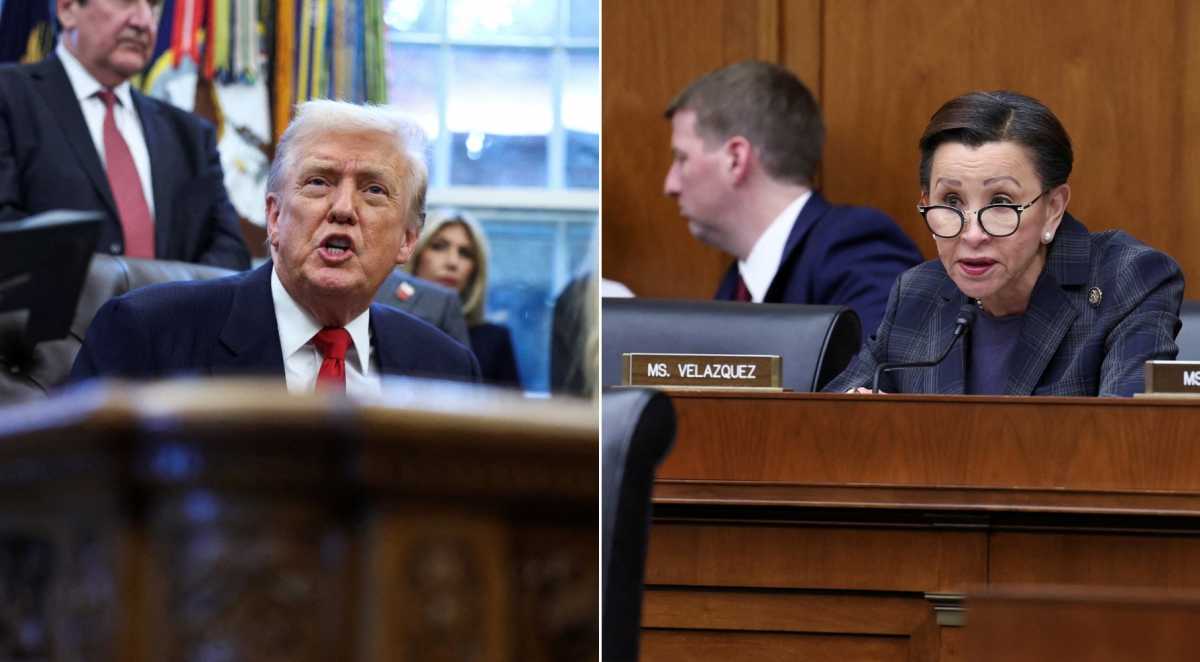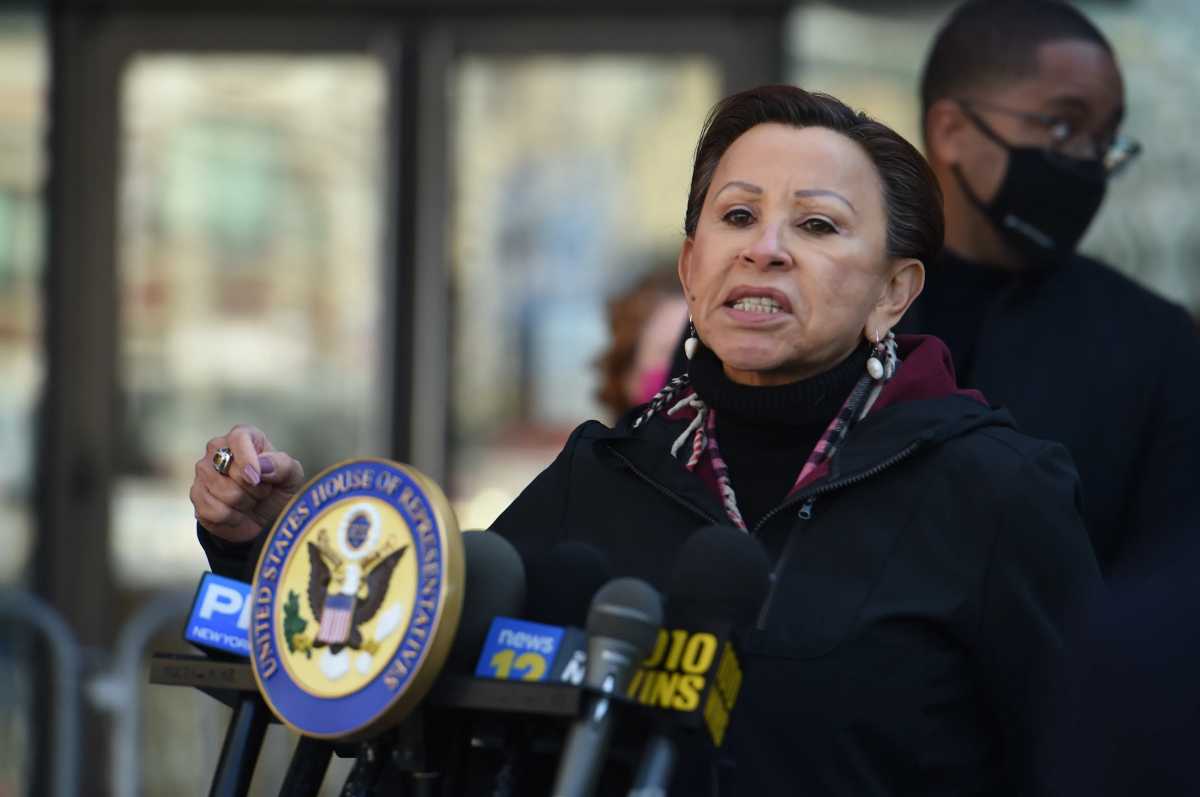BP Adams Announces New Subway Security Investments
Brooklyn Borough President Eric Adams joined with members of Transport Workers Union (TWU) Local 100, North Flatbush Avenue Business Improvement District (BID), and the New York City Police Department’s (NYPD) 78th Precinct outside the 7th Avenue subway station in Prospect Heights to announce new safety measures, following the weekend’s incidents, including a man shot and wounded at the station, as well as a knifepoint robbery and fight that ended in a man losing the tip of his finger.

“Public safety is the prerequisite to prosperity. If people feel unsafe using our subways, then our transit system – and by extension, our city – will suffer. We must use every tool in our toolbox to keep riders and workers safe, and be vigilant against backsliding into lawlessness. We will not go back to the days of the ‘80s and ‘90s when I was patrolling the subways. I thank TWU Local 100 and the North Flatbush Avenue BID for their partnership,” said Adams.
Adams announced a $2,500 allocation for the installation of security cameras along Flatbush Avenue businesses near the subway entrance, an extension of his existing Operation Safe Shopper initiative; this pioneering program that his office spearheaded to deploy security cameras outside of local businesses that help the New York City Police Department (NYPD) during its investigations of local crimes. Borough President Adams also renewed his appeal for the Metropolitan Transit Authority (MTA) to fund bystander intervention training — which would provide passengers with de-escalation skills to ensure the safety of their fellow riders during a dispute or attack — and praised the MTA for hiring 500 new police officers to patrol the subways, while reaffirming his call for them to be deployed with body cameras.
While overall crimes in the subway are down, certain categorizations have risen this year. According to figures compiled by the NYPD, there were 1,185 transit misdemeanor assaults citywide from January 1st through November 17th of this year. Of these 1,185, 68 were hate crimes on the subways, up more than 50 percent from last year, and incidents of groping were up 10.6 percent over the same time period last year. Attacks on workers have also increased; as of December 7th, there were 122 transit worker assaults in the subway, including spitting incidents, while there were just 84 last year during the same time period.
Menchaca, Lander Agree Vision Zero Needs Work
Mayor Bill de Blasio announced increased traffic enforcement during the holiday season, and that the City will lower the speed limit from 30 MPH to 25 MPH along Third and Hamilton Avenues in Brooklyn starting in January. The period around Christmas and New Year’s Day, the darkest days of the year, has also generally been among the deadliest of the year on city streets. Officials also issued an update on traffic fatality trends for 2019: despite setbacks, this year is on track to conclude as the second-safest in New York City’s recorded history.

Council Member Carlos Menchaca (D-Red Hook, Sunset Park, Greenwood Heights and portions of Windsor Terrace, Dyker Heights, and Boro Park) said, “For years, residents of Sunset Park have been calling for action as pedestrians and cyclists have been killed by motorists due to an outdated and dangerous transit grid at major roads, like Third Avenue. We are pleased the Mayor has responded; but lowering the speed limit is just the beginning. We need to work together with our city, state, and federal partners to ensure we equitably modernize our infrastructure for all New Yorkers. Four fatalities are already too many, our goal needs to be zero.”
In response to the recent 6 traffic fatalities, announced expanded enforcement efforts, both via the NYPD and through automated enforcement. The period between Christmas and New Year’s Day, among the darkest weeks of the year, is also usually among the deadliest of the year for pedestrians. This coming week, as part of its Dusk and Darkness campaign, NYPD will be expanding their enforcement efforts to ensure the streets are safe for pedestrians, cyclists and drivers. The city will also be adding more life-saving speed cameras.

Council Member Brad Lander (D-Cobble Hill, Carroll Gardens, Columbia Waterfront, Gowanus, Park Slope, Windsor Terrace, Borough Park, Kensington) said, “As we end 2019 with too many tragedies from traffic crash violence — each death stealing the life of a New Yorker and shattering a family — we must rededicate ourselves to the goal of zero fatalities. Reducing the speed limits on 3rd Avenue and Hamilton Avenue, where we lost too many lives this year, is a good step. I’m also committed to reaching an agreement with DOT and the Administration early in the New Year on the Reckless Driver Accountability Act. We can’t wait any longer.”
The De Blasio Administration also noted the notable Vision Zero trends of 2019. Traffic fatalities increased for first time since Vision Zero began in 2014, but 2019 will likely be New York City’s second safest year. Pedestrian deaths in NYC continue to hold steady, but more SUVs/light trucks on the road create challenges: After a dramatic decline in pedestrian fatalities two years ago (when fatalities fell from 148 in 2016 to 108 in 2017), NYC pedestrian fatalities have remained at about the same level. There was a sharp increase in Brooklyn cyclist fatalities: Of the 28 cyclist deaths in 2019, 17 happened in Brooklyn. In 2018, Brooklyn saw only 2 cyclist fatalities.
“While we’ve made tremendous progress over the past six years with Vision Zero, there is still undoubtedly more work to do to make our streets safer,” said de Blasio. “The recent traffic fatalities have made us even more determined to keep Vision Zero moving forward. We’re increasing our traffic enforcement efforts and lowering the speed limit on two of Brooklyn’s busiest streets to ensure that all New Yorkers arrive home safely for the holidays.”
Salazar, Lentol Applaud Signing of “Safe Way Home Act”
Governor Cuomo signed the “Safe Way Home Act” (S.3966A/A5775) Monday. The legislation provides survivors of sexual assault no-cost transportation from medical facilities where they received initial care in the wake of an assault to their home or a shelter. This legislation will go into effect after 90 days.

Senator Julia Salazar (D-Bushwick, Cypress Hills, Greenpoint and Williamsburgh, Bed-Stuy, Brownsville, East New York) said, “The Safe Way Home Act is an important victory for survivors of sexual violence, and its creation was directly informed by one of our constituents who survived sexual violence. Through this law, we are demonstrating to survivors that ensuring their safety, and the safety of crime victim advocates supporting them, is a top priority. Thank you to the Governor’s office and Assemblyman Lentol for partnering with us to make the Safe Way Home Act a reality.”
Assemblyman Joseph R. Lentol (D-Greenpoint, Williamsburg, Fort Greene) said, “The Safe Way Home Act will provide safety and peace of mind by ensuring that survivors will not be burdened with the

logistics of or paying for transportation home. This legislation is the perfect example of community activism coming to fruition. I am very proud to work with Deborah Spiroff on this important measure that will aid victims of sexual assault. I thank Senator Salazar for sponsoring this legislation in the Senate and applaud Governor Cuomo for signing this important measure that will go a long way to aid survivors of sexual violence.”
“Sexual assault is a heinous crime that can have devastating impacts on survivors, especially in the immediate aftermath of the abuse they suffered,” Cuomo said. “This measure will provide some peace of mind and security at a time when victims are most vulnerable by helping ensure they get home or to a shelter safely.”
For more information, eligibility guidelines and to locate a victim assistance program, visit their website or call 1-800-247-8035.
Parker Approves Creation of Environmental Justice Advisory Board
Governor Cuomo signed legislation (S.2385/A.1564) to create a permanent Environmental Justice Advisory Board and Interagency Coordinating Council. The Advisory Board will create a model environmental justice policy that ensures that New Yorkers, regardless of race, income, gender and national origin, have a right to fair treatment and meaningful involvement in the development of regulations and policies that affect the quality of their environment. The Interagency Coordinating Council will provide guidance to each state agency implementing environmental justice policies.

Senator Kevin Parker (D-East Flatbush, Flatbush, Midwood, Ditmas Park, Kensington, Park Slope, Windsor Terrace) said, “These new advisory bodies will help guide New York as we move forward and correct longstanding environmental injustices. Every person, no matter their race, religion, income or national origin, has a right to have their voice heard on policy decisions that affect their environment. I want to thank Governor Cuomo for signing this critical legislation and leading the way for a greener New York.”
The Environmental Justice Advisory Board will be appointed by the Governor and legislative leaders. Duties of the Advisory board will be to adopt a model environmental justice policy that is applicable to the work of state agencies, recommend improvements on environmental justice policy to the Governor and Legislature and comment on any proposed environmental rules by the State or Federal government relevant to environmental justice.
“For too long, low-income and minority communities disproportionately shouldered some of the worst environmental impacts, in some cases leading to severe asthma rates and other lifelong health issues,” Cuomo said. “Empaneling these advisory bodies will help right that historic wrong by ensuring those very communities have a seat at the table as we develop environmental justice policies and other measures to combat climate change.”
The 16-member Advisory Board will be comprised of 5 representatives from community-based organizations who advise and assist minority and low-income communities on environmental matters, 4 representatives from the business community and 7 representatives from state or national organizations who promote environmental conservation research and education.
The Interagency Coordinating Council will provide guidance to state agencies that are adopting Environmental Justice policies and serving as a clearinghouse of information on environmental justice for state agencies and the public by maintaining publicly available resources.










